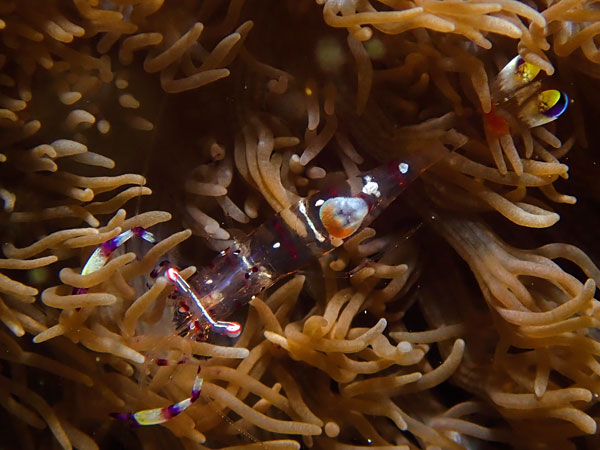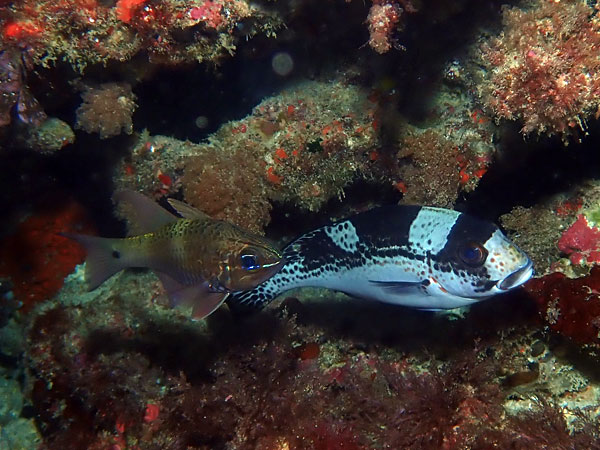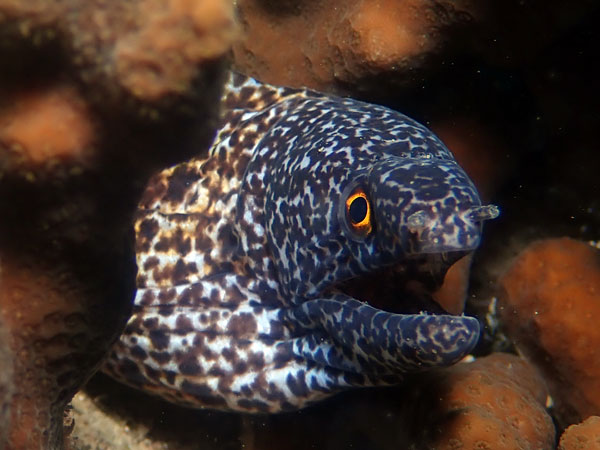|
Michael McFadyen's Scuba Diving – Lord Howe Island – Livs Crack
The south-western side of Lord Howe Island contains the lagoon and the barrier reef which runs from the northern end of the island to the southern end. The lagoon has a few entrances, at least two at the southern end and one at the northern end. The western side of the island is suitable to be dived in easterly, northerly and north-easterly winds when here will be fairly protected.
 |  |
| The main Livs Crack | Further along the crack |
This dive site is located close to North Passage, the northern entrance to the lagoon. Its actual location is GPS 31°32'17.581"S 159°02'49.225"E using WGS84 as the datum. This is about two kilometres due south of North Passage and about 500 metres off the barrier reef. It is named after one of the dive guides at Pro Dive, Olivia.
 |  |
| Crayfish | A glass shrimp in an anemone |
 |  |
| Another view of the main crack | The narrower crack from up high |
This site consists of a number of narrow gullies or cracks which run into the coral bottom and across the reef. They run both east-west and north-south. To do this dive the dive boat anchors in about 18 metres of water. The main Livs Crack is off to the east a short distance and runs to the north into the reef bottom. After initially dropping to 20 metres, the dive gradually shallows to about 12 metres. The crack is relatively wide and there are a few overhangs. I see some crayfish under these, six in one overhang alone.
After about 20 minutes the crack comes to and end and you head west across a sort of bowl. After another five minutes (all very slow swimming), there is another crack that heads more to the south. This is a narrow crack. Unfortunately I had some ear problems on this dive trip and on this dive, once I went up to 12 metres a second time, I could not descend again for a long time, so I could not properly examine the crack.
 |  |
| A school of trevally | Some fish under an overhang |
The crack gradually deepens back to about 18 metres. Finally around here I can descend again. We head back to the east to the anchor area. The rest of the dive is spent in this area and a bit shallower at 11 metres on the top of the nearby reef.
 |
| An eel |
As normal, I also see quite a few tropical fish species, including many different butterflyfish, some firefish, some leatherjackets and hundreds of one-spot pullers and a few trevally. I also see a few sharks and some more crayfish. There are also some pufferfish and anemones with glass shrimps.
On my dive in May, I had 21.7°C water and at least 30 metres visibility. A pretty interesting dive site, a pity I could not experience all it had to offer.
| 
 v6.00.307 © 2003-2005
v6.00.307 © 2003-2005